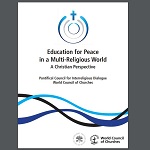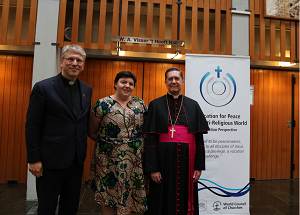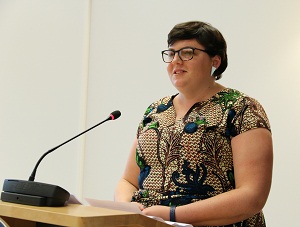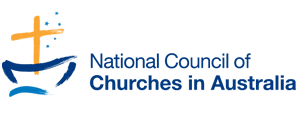
The Role of Youth in Promoting Peaceful and Harmonious Coexistence
"Blessed are the peacemakers, for they will be called children of God" (Matthew 5:9)
At a conference with the theme "Promoting Peace Together” held in Geneva on 21 May 2019, religious leaders focused on two historic documents related to peace-making. The first, “Human Fraternity for World Peace and Living Together," was jointly signed by Pope Francis and the Grand Imam of Al-Azhar in Abu Dhabi in February. The second, “Education for Peace in a Multi-Religious World: A Christian Perspective,” jointly prepared by the Pontifical Council for Interreligious Dialogue and the World Council of Churches (WCC), was officially launched at the conference.
NCCA Project Officer and WCC Executive Committee Member, Emily Evans, contributed to a panel on Human Fraternity for World Peace and Living Together, during this conference. She presented on 'the Role of Youth in Promoting Peaceful and Harmonious Coexistence' and highlighted the importance of including young people within discussions, decisions and innovations when working to promote peace in a multi-religious world.
There are about 1.8 billion young people between the ages of 10 and 24 – the largest youth population ever. Many of them are concentrated in developing countries. In fact, in the world’s 48 least developed countries, children or adolescents make up a majority of the population.
Too many of these young people see their potential hindered by extreme poverty, discrimination or lack of information. But with proper investment in their education and opportunities, these young people’s ideas, ideals and innovations could transform the future.
Reflecting on the 'Human Fraternity for World Peace and Living Together' document Emily suggested that "instead of only thinking that young people need to reawaken religious awareness so that future generations may be protected from the realm of materialistic thinking and from dangerous policies of unbridled greed and indifference, let us consider that when provided the opportunities of proper investment in education and opportunities, young people’s ideas, ideals and innovations could transform the future".
As a young, well-educated woman, Emily acknowledged the privileges she has received growing up in Australia. She concluded her presentation saying "I am here today because I come from a community and church that for my entire childhood and youth, has enabled, equipped and empowered me to have a voice, to have an opinion and have enabled me to be a leader."
The collaboration between the Pontifical Council for Interreligious Dialogue and the WCC Office for Interreligious Dialogue and Cooperation began in 1977. In their collaborative engagement, both offices have so far worked on several common interreligious projects, namely, Interreligious Prayer (1994); Reflection on Interreligious Marriage (1997) and Christian Witness in a Multi-Religious World: Recommendations for Conduct (2011).
The 21 May event marked a milestone in the continuing joint efforts of the WCC and the pontifical council aimed at strengthening ecumenical relationships through the fostering of interreligious dialogue.
 |
 |
| L-R, Rev Dr Olav Fykse Tveit, General Secretary, World Council of Churches, Emily Evans, HE Bishop Miguel Ayuso Guixot, Titular Bishop of Luperciana, Secretary of the Pontifical Council for Interreligious Dialogue | Emily Evans presenting at the Conference |












